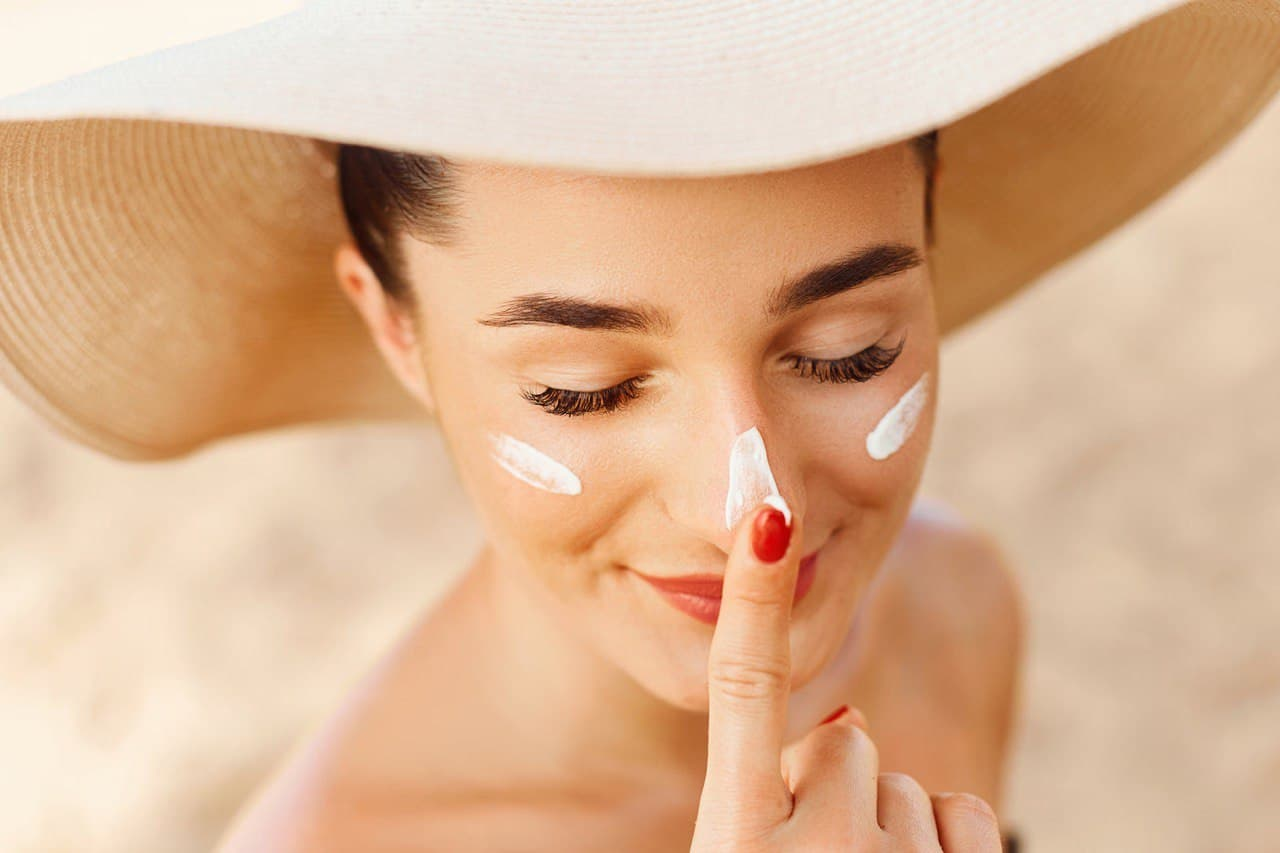Dealing with sunscreen white cast can be frustrating, but it doesn’t have to ruin your sun-safe routine. In this article, we’ll explore practical strategies for choosing and applying sunscreen to prevent that unwanted ghostly residue, ensuring you get effective protection without the aesthetic drawback. With the right knowledge, you can find sunscreens that blend seamlessly into your skin, regardless of your tone, and learn techniques to minimize or eliminate white cast completely.
Understanding White Cast in Sunscreens
The white cast often seen after applying sunscreen is usually due to the presence of mineral filters, such as zinc oxide and titanium dioxide. These ingredients are effective at blocking UV rays but can leave a visible layer on the skin, especially if not formulated or applied correctly. Certain skin tones are more susceptible to white cast, particularly those with deeper complexions, as the contrast is more stark. Let’s delve into the world of sunscreen ingredients and understand which ones are most likely to give you that dreaded chalky look.
Choosing the Right Sunscreen to Avoid White Cast

It is crucial to select a sunscreen that suits your skin type and color to avoid a white cast. Chemical sunscreens are absorbed into the skin and tend to leave less residue, while physical or mineral sunscreens sit on the skin’s surface and reflect UV rays. Here’s a quick guide to help you make an informed choice:
- Physical vs. chemical sunscreens: Understand the difference and which is more suitable for your skin.
- Tips for selecting sunscreens: Look out for labels like ‘sheer’ or ‘invisible finish’.
- Recommended products: Choose formulations that are tinted or designed for minimal white cast.
Before Application: Preparing Your Skin

How you prepare your skin before applying sunscreen can greatly influence whether or not you end up with a white cast. It’s essential to start with a clean, smooth canvas. This means thoroughly cleansing and hydrating your skin, and possibly exfoliating regularly to remove dead skin cells. Such a routine will not only improve sunscreen absorption but also its efficacy and appearance on the skin.
Application Techniques to Reduce White Cast
Applying sunscreen correctly is just as important as the sunscreen you choose. Here are some expert tips for application that should help reduce or eliminate white cast:
- Use the two-finger rule to measure the correct amount of sunscreen for your face and neck.
- Warm the product between your hands before applying to help it penetrate and spread more evenly.
- Apply in sections, and gently pat or press the sunscreen into your skin instead of rubbing.
After Application: Quick Fixes for White Cast
If you’ve applied your sunscreen and still notice a white cast, don’t worry, all is not lost. There are some last-minute fixes that can help you rectify this issue:
For a detailed look at makeup tips and other strategies, keep reading as we discuss alternative sunscreen options and tricks for dealing with white cast.
Alternative Sunscreen Options for Invisible Protection
Fortunately, the sunscreen market is vast, and there are plenty of options formulated to avoid leaving a white cast. Tinted sunscreens can be a game-changer, as well as formulas that heavily focus on sheer, lightweight ingredients, providing invisible protection. Let’s take a closer look at some alternative sunscreen options:
| Type of Sunscreen | Key Characteristics | Typical Ingredients | Suitable For |
|---|---|---|---|
| Tinted Sunscreens | Blend into skin, minimal white cast | Iron oxides, zinc oxide, titanium dioxide | All skin tones |
| Sheer Physical Sunscreens | Micronized particles, less visible | Micronized zinc oxide, titanium dioxide | Light to medium skin tones |
| Chemical Sunscreens | No physical particles, absorb UV | Avobenzone, octocrylene, homosalate | Sensitive skin, those who prefer no residue |
Advanced Tips and Tricks for Dealing with Sunscreen White Cast
Adding antioxidants to your sun care routine is beneficial for several reasons. They not only boost the effectiveness of the sunscreen by neutralizing free radicals but also can aid in the sunscreen’s absorption into the skin. This means less product sits on the surface, potentially reducing the risk of white cast. Consider a vitamin C serum or a sunscreen that already contains antioxidants for added benefits.
Addressing Specific Concerns for Skin of Color
For those with skin of color, the white cast can be particularly challenging. Thankfully, there are sunscreens specifically formulated to address these concerns. Look for labels that say ‘invisible,’ ‘clear finish,’ or ‘for melanin-rich skin.’ These products have been tested and proven to work well on darker skin tones, providing protection without the tell-tale residue.
Conclusion
Mastering the art of sunscreen application is essential for anyone looking to protect their skin without compromising on appearance. Remember, with the abundance of formulations available today, there’s no reason to settle for a white cast. Experiment with different products and techniques to find what works best for you, and never undervalue the importance of committing to a product that not only saves your skin from harm but also feels and looks good.
FAQs about White Cast and Sunscreen
Here are some frequently asked questions to help you navigate the sometimes-tricky realm of sunscreen application:
- Q1: Can white cast be completely avoided?
- A1: Yes, by carefully selecting and correctly applying sunscreen, you can prevent or significantly reduce white cast. It’s all about finding the right sunscreen for your skin and using the proper techniques.
- Q2: Are there any sunscreen ingredients I should avoid to minimize white cast?
- A2: You might want to avoid or look for micronized versions of zinc oxide and titanium dioxide if you’re concerned about white cast. Chemical sunscreens are more likely to absorb completely without leaving residue.
- Q3: How can tinted sunscreen help with white cast?
- A3: Tinted sunscreens contain pigments that match skin tone, which helps to conceal the white residue that mineral sunscreens can leave behind, providing a more natural finish.
- Q4: Is there a difference between sunscreen for face and body in terms of white cast?
- A4: Facial sunscreens are generally more finely milled, which allows for a sheerer application, reducing the likelihood of a white cast compared to body sunscreens.
- Q5: Do water-resistant sunscreens have more of a white cast?
- A5: Water-resistant sunscreens could potentially leave more white cast due to their formulation, but many brands have improved their formulas to reduce this effect.


